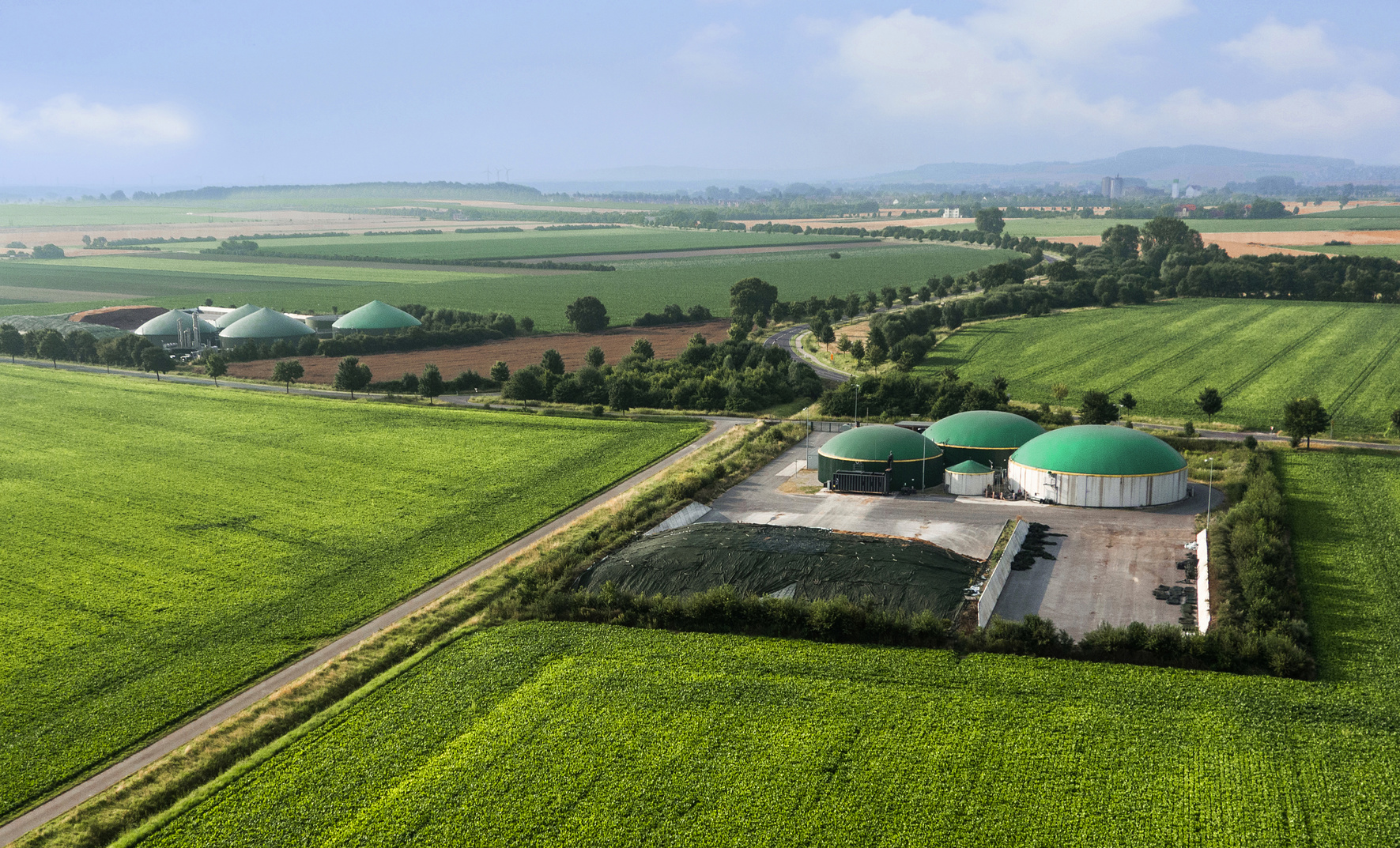
Over the years, the French government has boosted the financial incentives offered to the biomethane industry to reduce the costs associated with the production and operation of units. Whereas the exemption from the domestic consumption tax on natural gas (TICGN) previously applied to biomethane, the French government has just announced that it will no longer apply from January 2021. France Biométhane, a green gas think-tank, deplores this decision which, according to them, discredits biomethane and favors fossil fuels.
Biomethane, defined as a renewable natural gas with properties close to those of natural gas, may well play a major role in building a sustainable energy future according to the International Energy Agency (IEA). Indeed, there is no need to change the transmission and distribution infrastructures or end-user equipment. Consequently, it can be injected into the natural gas distribution network very easily or used as fuel for vehicles (bio-CNG, bio-LNG). It is also comparable to renewable energy since it emits 10 times less carbon than natural gas, can be stored and offers a solution to the intermittent use of solar and wind energy. Finally, it reduces the pressure on landfills and fits into the circular economy. Therefore, there are reasons to believe that biomethane could become more firmly established in the future. How about its economic viability and technical feasibility?
To date biomethane can be produced in 3 ways:
- The biogas road – which uses wet biowaste. It uses the means of anaerobic digestion to convert the biowaste into biogas. The biogas is then purified to remove the CO2 and other contaminants to produce biomethane.
- The syngas road – which uses dry or semi-dry biowaste. It uses the means of pyro-gasification to convert the biowaste into syngas. The syngas is then cleaned and methanised to convert the hydrogen, carbon monoxide and dioxide into methane.
- The hydrogen road – which uses electricity. It uses the means of electrolysis (or power-to-gas) to convert electricity into hydrogen. The hydrogen is then cleaned and methanised to convert it into methane.
In short, there are three main methods for producing biomethane: anaerobic digestion, pyro-gasification and electrolysis. To date, approximately 90% of the biomethane produced comes from anaerobic digestion and the upgrading of biogas. Among the purifying and upgrading technologies, we can find water scrubbing, adsorption, cryogenic separation, membrane technology, etc.
Waga Energy, a landfill gas-to-energy technology firm, is one of the large players in this segment. In 2018 they notably joined forces with environmental services giant Veolia. Since then, Veolia has been using Waga Energy’s Wagabox® technology to produce biomethane using biogas, which is injected directly into the natural gas grid operated by GRDF. In early October, the two players signed a contract to install a purification unit at the waste storage center in Claye-Souilly. This facility, which should be commissioned by February 2022, will produce biomethane from waste and supply 20,000 households in the Paris region with renewable gas.
Last year, France set an objective of injecting 10% of biomethane (21 TWH) into the country’s gas network by 2030, like Denmark is already doing. Numerous biomethane injection sites have seen the light of the day. To date, 133 biomethane injection sites are producing 2.3 TWH per year. With an average annual growth rate of more than 60% over the last 3-4 years, the French goal seems feasible.
However, production costs remain high when taking into account the cost of input supply, the cost of transformation (into biogas/syngas and then into biomethane), and the cost of injection (connection to the energy grid). The price to produce biomethane reaches €95 compared to €20 for natural gas. This is why the development of biomethane will ultimately depend on the policy framework and if the market conditions remain attractive for the project leaders (green gas feed-in tariffs, stability, or reduction of construction and gas connection costs).
Overall, the optimal uses of biomethane are in the end-sectors where there are fewer low-carbon alternatives (high-temperature heating, petrochemical feedstocks, heavy-duty transport, shipping, etc.). There are also other motivations such as rural development (household digesters), energy security (complementing wind and solar PV or substituting imported natural gas) and urban air quality.
2 Key Figures
330 Biomethane startups
registered by Crunchbase
Market size expected to reach $3.4bn by 2027
The global biomethane market accounted for $1.8 billion in 2019 and is expected to reach $3.4 billion by 2027 growing at a CAGR of 8.3% during the forecast period.
3 startups to draw inspiration from
This week, we identified three startups that we can draw inspiration from: CPD-Swiss, Nexus Fuels, and Pyrowave.
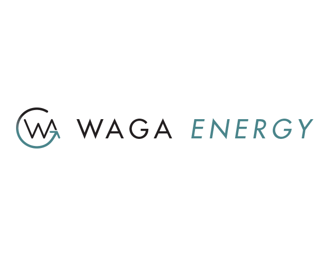
Waga Energy
Waga Energy develops, designs, invests and operates WAGABOX® units that recover biogas from landfill sites to transform it into biomethane. Waga Energy uses two upgrading processes: membrane filtration and cryogenic distillation.
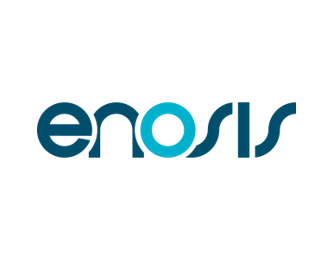
Enosis
Enosis develops a biomethanation reactor that converts biogas, syngas and CO2 into methane and provides flexibility services to the electrical grid.
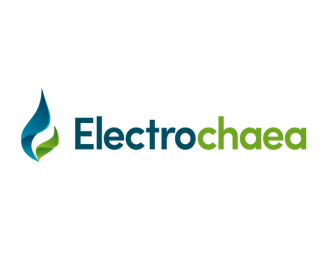
Electrochaea
Electrochaea’s proprietary power-to-gas (P2G) process converts renewable energy and carbon dioxide into grid-quality renewable methane for storage and distribution.

EIT Health and Biogen are joining forces to launch ‘neurotechprize’ to advance promising technology solutions addressing Alzheimer’s Disease (AD) from around the globe.
Through the neurotechprize, they aim to accelerate the most promising solutions and technologies addressing the challenge of AD in Germany.
Aster Fab is thrilled to have supported Biogen and the neurotechlab in the design and organization of the prize.
**
4 AREAS OF FOCUS
EIT Health and Biogen have identified four areas of focus that could make a difference in the life of people diagnosed with AD:
1. Accelerating the diagnostic pathway
2. Improving disease monitoring
3. Easing burden on patients
4. Maintaining quality of life
**
THE PROGRAM
The program is aimed at health entrepreneurs in the neurotech space seeking support in the validation of their ideas and developing business goals in a supportive and enriching environment.
The program offers participants:
- A tailored three-month journey focused on your team’s objectives, established individually at the beginning of the program
- Intensive mentoring from top experts in business and science
- Access to industry stakeholders
- 10,000€ funding to support participation of founders and/or key team members in the journey
**
ADMISSION PROCESS
Shortlisted teams will be invited for an online interview directly by EIT Health staff and Biogen experts. The interviews will take place between 20-26 January 2022. Shortlisted teams will be able to book the time for the interview via link provided in the invitation.
The application score and the result of the online interview will be combined to draw up a list of teams selected to pitch live in front of the Jury.
Up to 15 shortlisted teams (Semi-Finalists) will be invited to pitch their solution in front of the Jury on February 1st, 2022 to secure their spot in the program. The Jury will select up-to 10 teams (Finalists) who will be invited to enter the program (Finalists).
**
THE PRIZE
The Jury will be able to award up-to two prizes:
- 1st Prize of 100,000€ for the winning solution
- 2nd Prize of 50,000€ for the runner-up
123Fab #41
1 topic, 2 key figures, 3 startups to draw inspiration from
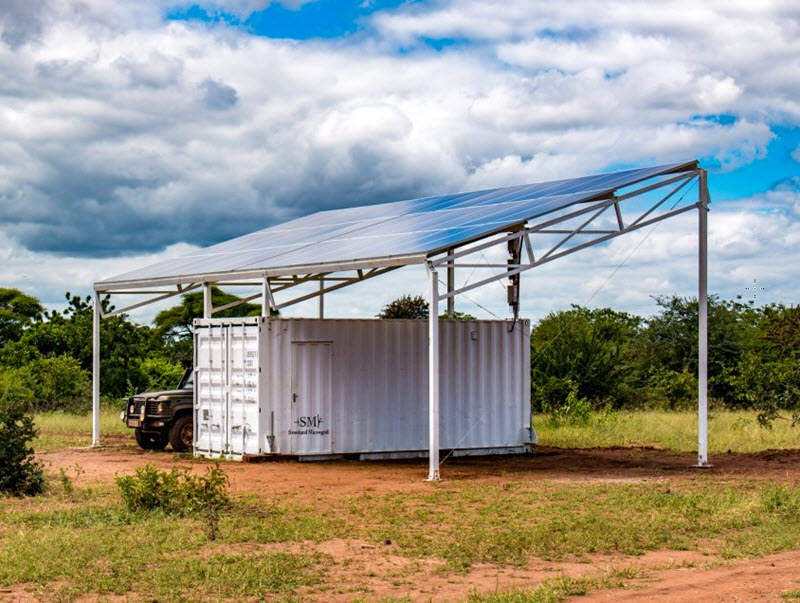
In 2020, in addition to $650 million in private investment in Africa’s mini-grid sector, the African Development Bank announced a $7 million grant to help this African industry. Mini-grids can be defined as sets of electricity generators (10 kW to 10MW) – and possibly energy storage systems – interconnected to a distribution network that supplies electricity to a localized group of customers.
Different technologies can power mini-grids. The most common types are solar mini-grids, hydro mini-grids, and hybrid mini-grids that couple renewable energy with non-renewable sources, such as solar-diesel or solar-biomass systems. Mini-grids can be connected to the national electricity network, but they can also operate autonomously without being connected to a centralized grid. In the first case, the mini-grid is designed to interconnect with the central grid, which means that it operates under normal conditions, disconnecting only in case of a central grid failure or demand peak. In the other case, the mini-grid is designed to operate autonomously in a remote location with the option to connect to a central grid when grid extension occurs. Thus, mini-grids address a wide range of uses, from access to energy in remote and off-grid areas in emerging countries to electricity generation in eco-districts in more developed regions. The three main use cases are the following:
- Remote areas where households lack access to electricity (40%): The State of the global mini-grid market Report of 2020 estimated that 238 million households could be connected to mini-grids in Sub-Saharan Africa, Asia and island nations by 2030. As a result, large corporations and startups are addressing this surging market. In Africa, ENGIE inaugurated its first PowerCorner mini-grid in Zambia in April 2019 and aims to develop 2,000 mini-grids by 2025. In Asia, India’s Tata Power has a similar project in its home country. Startups are also addressing this market. A great example is Nuru, a mini-grid owner and operator using solar-hybrid systems in DRC, in a country where the national electrification rate is only 7%.
- Remote commercial and industrial sites (16%): For off-grid and hybrid power plants, where connection to the national grid is more expensive, hybrid mini-grids can be installed. This is what eLUM does, providing solar-diesel solutions to factories and power plants, such as for a food processing factory in Ghana.
- Eco-district and city for better energy efficiency (10%): The city of Feldheim, Germany, owns and operates a local renewable mini-grid system consisting of solar, wind, and biomass power generation sources, as well as a battery storage system. It has managed to reduce the cost of electricity for residents by 30%.
Mini-grids are a strong trend, that should be embraced rather than questioned. Indeed, up to one-third of the losses associated with distributed energy resources could be recovered if utilities tapped into the mini-grid opportunity. The integration and development of mini-grids are made possible by several technology innovations:
- Plug-and-play energy management systems using artificial intelligence: Thanks to the developments in optimization model software, connection to the main grid can be efficiently done and AI can be used to forecast demand and energy generation from renewable sources, to accurately match supply with demand. For instance, research institutes CSIRO (Australia) and NREL (USA) are working together to simplify the integration of renewable mini-grid systems by creating a plug-and-play controller that can maximize the use of solar energy.
- Low-cost battery storage technology: Battery storage systems are crucial in balancing the variability of PV and wind and in shifting the electricity generated at times when supply exceeds demand, to times when demand exceeds supply. While historically renewable mini-grid systems have used lead-acid batteries due to their lower cost, technological advances and large-scale manufacturing of lithium-ion batteries now make them a competitive solution.
- Advanced metering infrastructure: Smart meters can enable remote monitoring of consumption and support the implementation of various pricing schemes, such as time-of-use tariffs. In the case of off-grid systems, renewable mini-grid operators can implement prepaid or pay-as-you-go models using mobile payment systems and smart meters – to remotely switch on and off customers’ electricity supply.
All of these innovations have not only enabled mini-grids to become a relevant source of electricity supply, but they have also helped generate undeniable economic, ecological, and social impacts. First, mini-grids are often the only economically viable option for electrifying rural communities. Hybrid mini-grids also increase the reliability of the electricity supply. When it comes to their carbon emissions, they are limited as they often incorporate 75%-99% renewable supply. Finally, the implementation of mini-grids has proven to have a positive social impact by fostering and improving the local governance structure through community involvement.
Despite these benefits and market attractiveness, mini-grid penetration remains low in most developing countries due to technical difficulties and economic challenges. The main technical issue is lack of maintenance or use of poor-quality technology, which could be due to a lack of sufficient funding or a shortage of local skills for maintenance. Then, the major economic challenges are the need for regulations to protect mini-grid asset cash flows (e.g., protecting isolated mini-grids if the main grid arrives), and the need to solve customers’ ability to pay, as their irregular income streams pose significant risks to revenue collection.
To conclude, mini-grids have a strong future with short-term uncertainties. While the mini-grid market is estimated to grow at least at a double-digit rate over the next six years, the growth is limited by technical and financial issues. New component technologies (e.g., batteries) and new integration models appear to be the main drivers to solve these issues today (e.g., AI, smart meters).
2 Key Figures
389 mini-grid startups
registered by Tracxn
The mini-grid market expected to reach $30 Bn by 2025
The global mini-grid market was estimated at $11.4 Bn in 2019 and is expected to reach $30 Bn by 2025, at a CAGR of 14.75%.
3 startups to draw inspiration from
This week, we identified three startups that we can draw inspiration from: SolarKiosk, Kemiwatt, and SOLshare.

SolarKiosk
SolarKiosk is a German start-up that provides clean and sustainable energy services intended to help resource-scarce and off-grid areas gain easy access to electricity through energy hubs. The company designs, manufactures, implements and operates solar mini-grids which can be deployed in the most remote areas.

KemiWatt
Kemiwatt is a French start-up that develops innovative redox flow battery technology for stationary energy storage. A typical application is the storage of renewable energy (solar, wind), either off-grid for micro grid, or mini-grid services (load-shifting, peak-shaving,…).
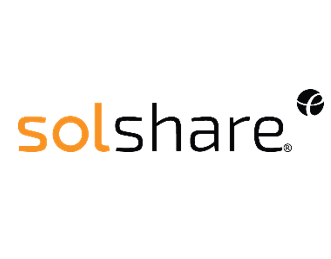
SOLshare
SOLshare is a Bangladi stat-up that is the developer of an electricity trading platform designed to manage local electricity for households and small businesses in densely populated off-grid villages. The company’s peer-to-peer platform enables users to monetize excess solar energy, and create a network by sharing electricity.
To receive the latest Aster Fab insights directly in your inbox, you can subscribe here.
123Fab #40
1 topic, 2 key figures, 3 startups to draw inspiration from

Plastic pollution is one of the most important environmental issues of the coming years. Plastic’s low cost and ease of production have made it an indispensable material in many sectors, especially in packaging, accounting for more than 45% of plastic waste generation in 2015. Due to its slow decomposition rate and the fact that 40% of all plastic trash is single-use, plastic waste has rapidly grown, making end-of-life management a burden for policymakers. Last year, France adopted an anti-waste law, setting a goal of 100% recycled plastic by 2025 and a ban on single-use plastic packaging by 2040. In 2015, 8% of plastic was incinerated, 7% was recycled and 55% was disposed of in landfills or the natural environment, while 30% was used. There are many types of plastics, from thermoplastics and thermosetting polymers to crystalline plastics and bioplastics, but the vast majority of plastics are made of polymers.
Today, the primary means of recycling is mechanical recycling, which accounts for more than 99% of infrastructure and business. The principle is simple, it involves crushing plastics into granulates, washing them and then melting them down so that they can then be reused. To be efficient, mechanical recycling requires a clean stream of plastic waste. Thus, thorough sorting needs to be done beforehand to separate plastics by color and type, which makes it impossible to recycle laminated packaging (made of different plastics). Mechanical recycling is also limited because plastic can only be recycled a maximum of 5 to 7 times, and be reused in low-value products, which calls into question the economic viability of this method.
In recent years, chemical recycling has gained momentum, with the goal of providing a solution for hard-to-recycle products and the potential for an infinite number of recycling cycles. Among the chemical recycling processes, depolymerization has attracted the most interest from startups and corporates.
What is depolymerization? Polymers are long associations of chemical entities called monomers. Depolymerization is the process of breaking the bonds of the polymer chains to create a mix of monomers. It is very useful for plastics because the products of this chemical reaction can then be reused.
To tackle the recycling problem, depolymerization of plastic waste can be used in various ways:
- From plastic to fuel: Some, such as CPD-Swiss or Paterson energy, depolymerize any type of plastic waste using pyrolysis (heating the material without oxygen) to create “pyrofuel”, or catalysis (accelerating the chemical reaction by introducing another chemical entity) to create synthetic diesel. Part of the fuel produced can then be re-used to produce heat in the process, making it energy self-sufficient, and the product can be used as an alternative fuel and energy carrier.
- Plastic to feedstock: Nexus fuel and Polycycl focus on some categories of plastics, HDPE, LDPE, PP, and PS (#2,4,5 and 6 in recycling codes), which are not recyclable with conventional methods and represent approximately 60% of the plastics on the market. They use depolymerization to turn them either into petrochemical feedstock or back into virgin plastic (purified plastic resin). The first through pyrolysis, the second through a proprietary chemical recycling technique called Contiflow Cracker. Plastic energy uses the same categories of plastic to produce syngas (used to make the plant run) and feedstock to re-create virgin plastic.
- Plastic to plastic: Some startups focus on recycling one type of plastic such as Pyrowave, which uses microwave-based depolymerization of polystyrene (#6 recycling code) to turn it into styrene, its associated monomer. This styrene can then be re-polymerized into polystyrene indefinitely. Ioniqa on the other hand focuses on PET (#1 recycling code). The company uses a smart fluid (a fluid whose properties can be changed by applying an electromagnetic field) to dissolve the polymers constituting the PET back into monomers, which can, in turn, be used to produce brand new PET. Both these startups aim to provide a new way to attain a truly circular use of these resources.
Corporations are also interested in depolymerization techniques. Four months ago, Shell announced a partnership with Nexus Fuels to scale-up commercial production of chemicals from plastic waste. At the end of 2018, Coca-Cola announced a partnership with Ioniqa to produce new bottles containing at least 50% of recycled PET by 2030, the same year PepsiCo announced a multi-year supply agreement with Loop Industries to produce 100% recycled PET containers using Loop’s depolymerization technology. Sealed Air, a leading packaging corporation, invested in Plastic Energy last year to enhance plastic recycling circularity.
Pre-treatment of plastic waste remains a key factor for recycling. Saperatec has chosen to address the problem of laminated packaging treatment by creating separating fluids that split the various layers of such packaging. The split products can then be re-used. In 2018, adhesive giant Henkel invested in Saperatec to form a collaboration to enrich its recyclable adhesive line.
Depolymerization seems to have gained a lot of momentum in recent years, but green groups are questioning the efficiency of these processes at scale and their environmental impact. Particularly with regard to the potential release of toxins during the processes and their energy intensity compared to mechanical recycling, as well as the carbon emissions entailed by the consumption of plastic-based fuels.
2 Key Figures
39 plastic recycling startups
registered by Crunchbase
Plastic recycling market expected to reach $60.7Bn by 2025
The global plastic recycling market was estimated at $42.3Bn in 2020 and is expected to reach $60.7Bn by 2025, growing at a CAGR of 7.5%.
3 startups to draw inspiration from
This week, we identified three startups that we can draw inspiration from: CPD-Swiss, Nexus Fuels, and Pyrowave.

CPD-Swiss
CPD-Swiss is a Swiss-based startup created in 2012. It specialises in the development and implementation of projects for the production of diesel fuels and storable energy carriers from renewable residual waste materials (biomass) and from organic waste (plastic, synthetic materials, etc.). For this purpose, CPD-SWISS develops and builds industrial plants based on CPD technology (Catalytic Pressureless Depolymerization).
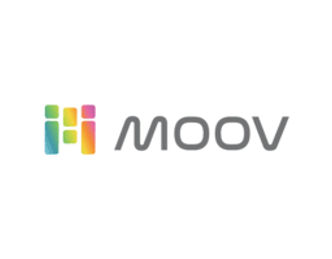
Nexus Fuels
Nexus Fuels is a startup based in Atlanta, provider of waste management services designed to convert waste plastics into plastic feedstocks and fuels. The company’s services reduce plastic waste from being landfilled and has low operating costs, enabling people to convert difficult-to-recycle waste plastics into fuel and virgin plastic.
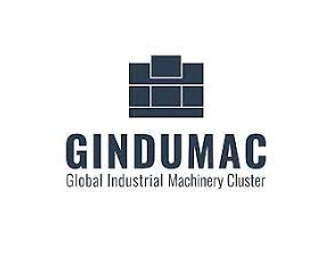
Gindumac
Based in Ontario, Pyrowave is the developer of a microwave-based chemical recycling technology intended to enable plastic regeneration. The company’s technology regenerates post-consumer plastics by breaking them down into intermediate products that are used to make plastics identical to virgin plastics, thereby enabling customers to reduce plastic waste and be a part of a circular plastic economy.
123Fab #38
1 topic, 2 key figures, 3 startups to draw inspiration from
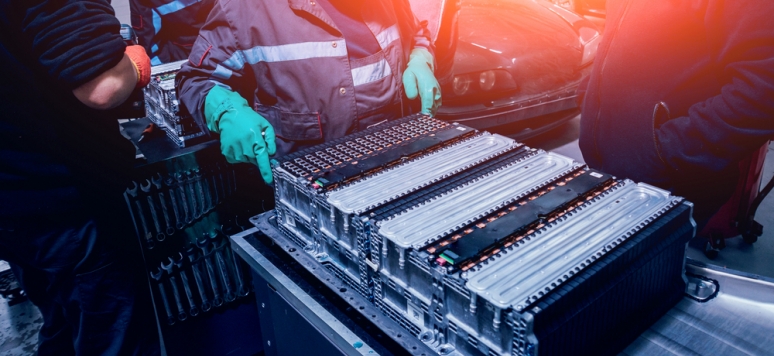
According to the International Energy Agency (IEA), the global fleet of electric vehicles (excluding two/three-wheelers) will reach 245 million vehicles in 2030 – more than 30 times the current level. But while the electric mobility revolution is underway, batteries present several challenges. EV batteries only last about 10 years and the main raw materials used in them are becoming increasingly scarce. In addition, the prices of raw metals are rising and volatile: the price of lithium in 2018 was 241% higher than in 2010, before falling in 2019. Thus, the two major consequences of this EV boom are the increase in demand for lithium, cobalt, and nickel (the key raw materials to produce battery cells) and the challenge of managing lithium-ion battery waste. Players like startup Redwood Materials, cofounded in 2017 by former Tesla CTO J.B. Straubel, are positioning themselves to address battery recycling issues. Indeed, in February 2021, Redwood Materials signed an agreement to recycle scrap and defective battery cells for Envision AESC, the Nissan car battery manufacturer in Smyrna, USA.
When an EV battery reaches the end of its first useful life, manufacturers can either dispose of it, reuse it, or recycle the valuable metals. To reuse batteries, several European automotive companies have already begun installing old EV batteries in multiple energy storage systems, ranging from small-scale residential systems to large-and grid-scale solutions. Nissan, for example, is the first carmaker to have received certification for second-life LEAF batteries to be used in stationary energy storage. Car retrofit – i.e. replacing a thermal engine with a recycled LIB or H2 battery to reduce its emissions (see our newsletter #28) – is also gaining ground. In 2019, Audi announced that it had begun testing second-life EV batteries for factory vehicles.
The other recycling solution is to separately recover the materials from the LIB to give them a second life. As resources are limited, LIB recycling seems to be essential for electric vehicles’ success. The economic benefits of battery recycling are very promising. Based on a recycling rate of 80% after 10 years of use, the profit from the battery recycling market could amount from €0.7 Bn to €1.4 Bn in 2030 (Roland Berger study).
Recycling processes generally involve a physical/mechanical separation followed by pyrolysis and/or a hydrometallurgical process.
- The pyrometallurgical process: nickel, cobalt, and copper are recovered through smelting. Despite the large energy inputs, the recovery rate of this process is low, around 30-40%.
- The hydrometallurgical process: the metal component and the recycled metal solutions are dissolved by leaching. The recovery rate of this process is higher and less-energy intensive, thus preferred by market players. For instance, the German startup Duesenfeld has built a recovery method that combines mechanical, thermodynamic, and hydrometallurgical processes. Compared to the pyrometallurgical process, their method saves 4.8 tonnes of CO2 per tonne of recycled batteries.
Both technologies are used by more and more players. Not only the traditional recycling players but also automotive companies and new startups.
Veolia has been recycling car batteries in France since 2013 and decided in September 2020 to join forces with Solvay to create a circular economy consortium to optimize the recycling of LIB for EVs and hybrids. Regarding automotive players, Audi and recycling player Umicore announced a battery recycling partnership in 2019. For this closed-loop pilot project, Umicore will recover cobalt and nickel from Audi’s e-trons (more than 90% of the cobalt and nickel in their batteries can be recycled) and process them into precursor and cathode materials to produce new batteries from recycled elements. Similarly, Singaporean startup Green Li-ion has a patented multi-cathode processor to recycle all types of Li-ion batteries into 99.9% pure cathodes. This is expected to speed up current recycling processes tenfold and increase profits fourfold.
As this recycling potential begins to be exploited by many players, legislators are supporting these trends through regulations and directives. The EU Commission, whose new Battery Directive is due to be transposed into national law by 2024, wants car and battery manufacturers to set up a comprehensive battery collection and recycling system. The stated aim is that about half the weight of lithium-ion batteries (LIB) should be recycled. In Canada, the Ontario government drafted regulations in May 2019, making the battery producer liable for the collection and management of their product to help create a circular economy. In China, the government has implemented a Battery Recycling and Traceability Management Platform in 2018, where all EV batteries are assigned a unique and traceable ID, facilitating the collection, sorting, and recycling of e-waste.
Although the regulation is being implemented, four major challenges remain:
- The inadequacy of the logistics of LIB collection channels. While this issue should gradually be resolved as recycling accelerates, the question of who will take on the role of logisticians (battery manufacturers, automotive brands, or recycling players, etc.) will remain uncertain if recycling remains centralized.
- The high upfront expenditure required to set up a large-scale LIB recycling plant. Economies of scale are likely to be seen within 5-6 years as recycling becomes more widespread and systematic.
- The requirement for a high LIB recycling efficiency rate, regardless of the LIB chemistry being recycled. The recycling rate is already around 80% and is expected to increase in the coming years, as some startups are developing prototypes capable of recycling more than 90% of the LIB.
- The recycling steps vary according to the different types of batteries (lead-acid, nickel-cadmium, zinc-air, alkaline, …). Thus, recycling facilities need to be adapted to several processes. Even among LIB batteries, the most used for EVs, the process differs according to their composition and recovery rate.
To conclude, lithium-ion batteries are likely to remain the major battery type for EVs in the coming decades (due to their high energy intensity relative to their weight, compared to other batteries such as lead-acid, nickel-cadmium, or zinc-air). There is a need to close the loop to meet the demand for their scarce and expensive raw materials.
2 Key Figures
51 battery recycling startups
registered by Traxcn
Market size expected to reach $12.2Bn by 2025
The size of the battery recycling market is expected to reach $12.2 Bn by 2025, compared to a market of $1.5 Bn in 2019.
3 startups to draw inspiration from
This week, we identified three startups that we can draw inspiration from: Li-Cycle, Green Li-ion and Lohum.
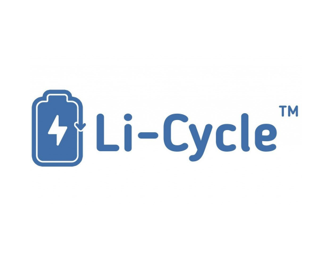
Li-Cycle
Li-Cycle is a Canadian startup that uses a combination of mechanical size reduction and hydro-metallurgical resource recovery techniques to recycle lithium-ion batteries. Their recycling technique does not generate any hazardous product which minimizes transportation liability and lowers costs.
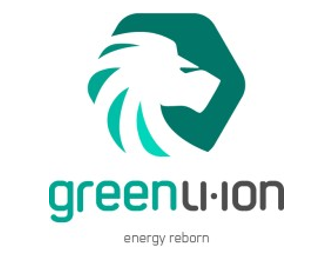
Green Li-ion
It is a Singapore-based start-up which recycles the metals of LIBs (cobalt, nickel, manganese and other expensive metals), recover them, and make them ready to be reused in new batteries. Their patented technology is cleaner, faster, and four times more profitable than current LIB recycling. It is also the only technology to fully rejuvenate the battery cathode
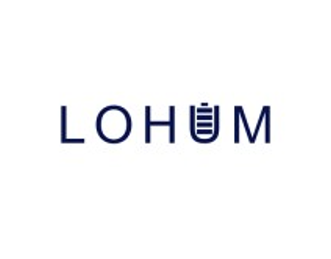
Lohum
Lohum is an Indian start-up manufacturing of Li-ion battery packs and recycling battery components. It provides full lifecycle solutions for manufacturers involved with low-power mobility and storage applications such as electric two-wheelers, rickshaws and inverters. It offers secondary life cycle solutions such as battery recycling to large manufacturers and companies using Li-ion batteries.
123Fab #36
1 topic, 2 key figures, 3 startups to draw inspiration from

On the one hand, heating and cooling applications are among the largest energy consumers (about half of the total energy consumption). On the other hand, some of the renewable electricity produced is lost due to non-immediate use, and this will continue to accelerate as renewable energy facilities are being developed faster than batteries and storage solutions. The reconciliation of these two issues, converting electrical energy into heat (or cold), is called Power-to-Heat (PtH). Thermal energy is produced by heat pump technologies or electric boilers. In the context of growing environmental awareness, industrials are increasingly looking for technologies that will enable them to shift from fossil-based industrial heating to electrically-based, power-to-heat processes. These industrial heating applications account for almost 20% of global energy consumption.
These renewable power-to-heat technologies help industries to reduce their CO2 emissions and offer higher flexibility in the power system when equipped with smart load management. Industrial application technologies are already mature and commercially available. However, they have yet to be integrated into hybrid heating systems (e.g. with natural gas).
How does it work? The first step is the delivery of electricity from renewable sources to power stations (which may be large centralized heating production stations or decentralized entities). Infrastructures can be equipped with thermal storage systems, such as those of Form Energy, to enable consumers to use the stored heat and thus reduce the demand on the power grid during peak electricity demand periods. Afterwards, there are two technologies to convert electric power into heat: electric boilers and heat pumps. Electric boilers use electricity to heat water, which is then circulated through pipes to provide space heating or stored in hot water tanks for later use. Heat pumps, on the other hand, transfer heat from the surrounding heat sources to buildings and infrastructures. They can fulfill both heating and cooling requirements — typically using between 66% and 80% of the energy contained in the ambient air, water, or ground, and between 20% and 33% electricity to drive the process.
Where is it used? These technologies are applied in different industries, for several uses. The first example is the food & beverage industry, where heat plants are used in Japan for brewing sake and beer. The Suntory production plants, for instance, use a cogeneration system (combined heat and power) that recovers the heat generated from in-house generation and uses it as a heat source for brewing beer and extracting coffee and tea, increasing energy efficiency to 70-80% and reducing CO2 emissions by 20-30%. Another example is the container washing plant in Spain that uses solar thermal heat. 22% of their hot water (80°C) demand is covered by a solar thermal system based on flat plate collectors, and the remainder is covered by a conventional boiler using natural gas. District heating is also a common application of power-to-heat. In Hamburg, Vattenfall operates an electric boiler that uses excess wind generation, thus avoiding wind power curtailment, to generate district heat in Berlin. The units use electricity from renewable energy sources to heat water, which transmit heat to residences and commercial buildings.
More generally, power-to-heat innovations contribute to the transformation of the power sector in 5 ways:
- Reduction of renewable energy curtailment: the excess of energy is used to address heating needs.
- Increased flexibility through load-shifting: heat pumps can offer demand-side flexibility by switching their electricity consumption from high-demand time intervals to low-demand time intervals to convert electric power into stored heat or cold.
- Large-scale energy storage: the surplus heat (resp. cold) produced with renewable energy in summer (resp. winter) can be stored in thermal reservoirs (mainly aquifers), which then can be used to meet the winter (resp. summer) heating demand, thereby reducing the need for non-renewable heat sources during peak times. The most common solution is the use of Phase-Change Materials (PCM), which are efficient against energy loss and leakage and are substances that release or absorb enough energy to maintain a regulated temperature. A great example of such a process is the Canadian project Drake Landing, which uses solar thermal energy and seasonal underground thermal energy storage for a district heating scheme. It supplies a residential community of 52 households that have seen their greenhouse gas emissions cut down by more than 5.5 times per year.
- Grid services provided by aggregators: new “smart” storage heating solutions are designed to take advantage of variations in electricity prices throughout the day and can be remotely controlled by aggregators to both optimize heating costs for consumers and provide grid balancing services to the national grid.
- Increased self-consumption through renewable local generation: consumers with solar rooftop systems can use the locally generated electricity to power heat pumps.
Ultimately, having understood how power-to-heat systems work and what their benefits are, it can be useful to bear in mind the drivers behind their adoption and the regulations that are put in place. Incentives to decarbonize the heating sector are leading to the deployment of heat pumps at a steady pace. On average, the operating costs of using electricity to generate heat are comparable to those of using fossil fuel-based sources. High-performance heat pumps can generate more than 4–5 kWh of useful heat for every 1 kWh of electricity consumed. Furthermore, regulations are being implemented in pioneer countries, like in Germany, where the Renewable Energy Heating Act bans the use of oil burners to heat new buildings and requires all new buildings to use energy generated from renewable energy sources for space and water heating. Similarly, in 2017, Norway’s Ministry of Climate and Environment passed a law banning the use of oils and paraffin from 2020 in heating applications.
To conclude, now that power-to-heat technologies are mature and up-and-running, more incentives should be brought forwards to increase the use of renewable energy in heating and cooling. Domestic and industrial consumers will need to make upfront investments to shift to renewable energy for heating and cooling applications, and schemes that reduce the economic burden on consumers will encourage faster adoption of renewable energy in heating and cooling. However, these schemes need to be tailored to the needs of different consumer segments, types of buildings (residential vs. industrial), and types of heating system (centralized vs. decentralized), as well as to other external factors, such as the climate zone.
2 Key Figures
177 power-to-heat startups
registered by PitchBook, including 100 “thermal energy storage” startups
Market size expected to reach $369M by 2025
The market size of thermal energy storage is expected to reach $369M by 2025, at a CAGR of over 14.4% from 2020.
3 startups to draw inspiration from
This week, we identified three startups that we can draw inspiration from: Malta Inc, Enerstorage, and Heaten

Malta Inc
The US-based startup Malta Inc builds an electro-thermal energy storage system that converts electricity to thermal energy for storage. It later converts the thermal energy back into electrical energy whenever required
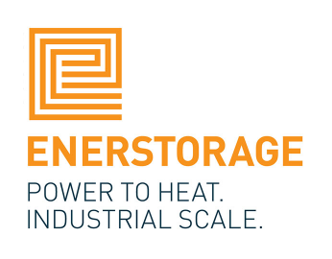
Enerstorage
The German startup Enerstorage sells power-to-heat plants for industries that require a lot of heat. The PtH systems provide an important link between the heat supply and the power grid, regulate the power grids, and thus lead to a successful energy transition.

Heaten
Heaten is an industrial startup that provides heat-to-power and power-to-heat machines. Their very high-temperature heat pumps are based on an innovative piston machine technology, which provides an output temperature up to 165°C, which covers 30% of the energy demand of all industrial heating processes.
123Fab #35
1 topic, 2 key figures, 3 startups to draw inspiration from
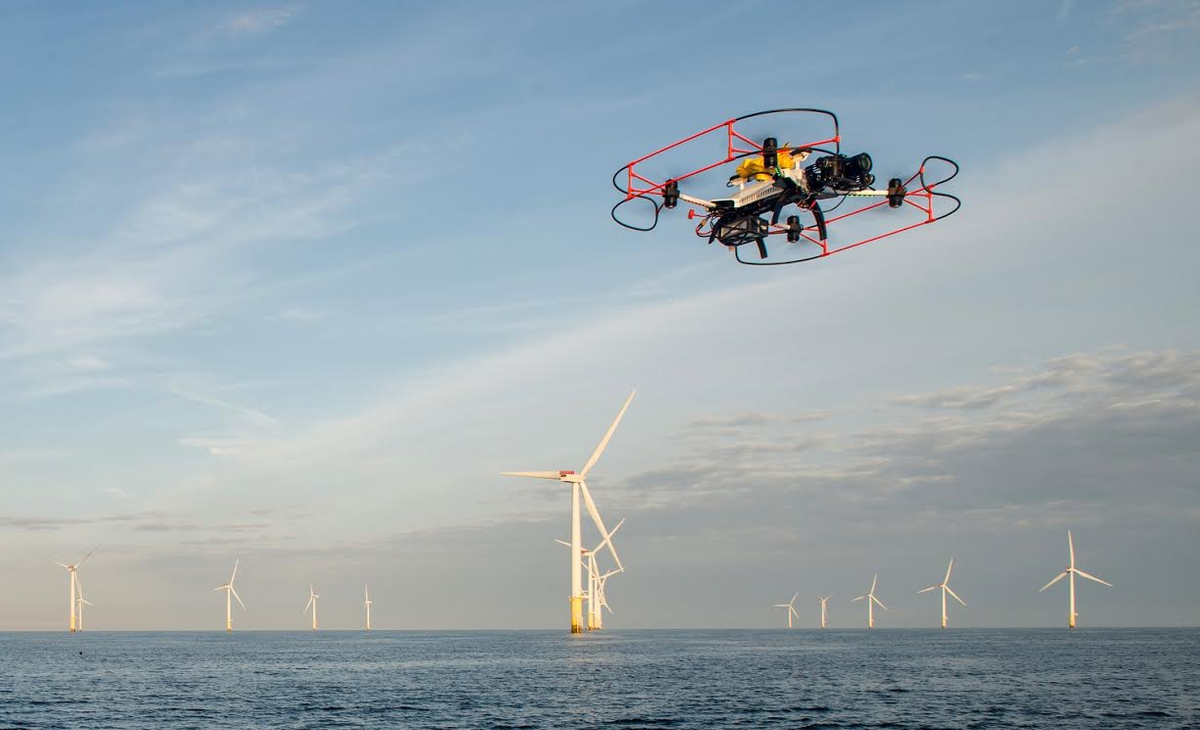
In February, Estonian start-up Hepta Airborne raised €2 million to take its drone powerline inspection solution to the next level. Using LiDAR, thermal sensors and cameras, Hepta Airborne helps automatically detect powerline and power infrastructure defects. This fundraising embodies the current surge in the use of drones for difficult tasks in the industry. Indeed, the overall commercial drone market is projected to reach $43 billion by 2024, up from $587 million in 2016. The volume of VC investments has increased by 21% over the past 4 years, reaching $185 million in 2020. In the coming years, the market is expected to become more concentrated, with the leaders winning out over weaker players, as did the fast-growing start-up Airobotics, which raised a total of $123M in funding over 5 years.
Drones are used in a variety of industries, but above all in 4D situations: dirt, dull, distant, and dangerous. The main industries that use them are the energy sector (both oil & gas and renewables), precision agriculture, construction, and mining. Although regulations are often a hindrance, there are gradually being adapted to each industry and use case, in order to enable the effective use of drones.
The energy sector can greatly benefit from drone inspections, which not only help to reduce costs, but also to prevent disasters and save lives. Indeed, they allow distant and dangerous inspections to be carried out, eliminating the need for climbing wind turbines or reaching offshore oil platforms. Although standards for drone operations are yet under development, they could help expand the use of unmanned aircraft services in the energy industry and boost innovation. The main challenge, however, lies in flights beyond the visual line of sight (BVLOS) – to carry out pipeline and powerline inspections over long distances, for instance – as the detect-and-avoid technology is not sufficiently advanced. Improvements in advanced EO/IR [electro optical/infrared] sensors, acoustic sensors, machine learning, ground-based radar, and other technologies could change the game. Avitas Sytems, a General Electric venture, has developed a digital platform and drone inspection capabilities for pipelines, for instance. Wind turbine inspection can be monitored by drones, such as those of the start-up Aerialtronics.
Drone activity in agriculture continues to increase, and the aerial imagery generated can provide unique insights by scouting crops, reporting crop damage, or determining tile locations. Drone use is mainly justified by a more accurate collection of crop data and the avoidance of dull stains. Over the past ten years, the Federal Aviation Administration (FAA) has continued to review the requirements for the operation of small unmanned aerial systems to create a reasonable legal pathway for use in agriculture. This involves obtaining a remote pilot certificate, registering the drone with the FAA, but also weighing less than 55 pounds, maintaining a maximum altitude of 400 feet, and remaining within the visual line of sight of the remote pilot or visual observer in command. Although these regulations seem restrictive, they enable farmers to use them as part of their needs. The Swiss start-up Gamaya uses HSI (Hyperspectral Imaging) technology deployed using small unmanned aircraft systems for remote sensing and high-resolution imagery. It can be used to diagnose crop diseases, the proliferation of invasive species, and environmental stresses.
As for drones in the construction industry, they are mainly used for surveying and inspection purposes. They perform dull, dangerous, distant, and time-consuming tasks. Drones are equipped with downward-facing sensors, such as RGB, multispectral, thermal, or LIDAR, and capture a large amount of aerial data in a short time. According to a PwC study, the use of drones throughout a construction project provides an unparalleled record of all activities; cuts planning and survey costs; increases efficiency and accuracy and eliminates disputes over the status of a project at a given point in time. Drafted regulations in the construction industry frame the use of drones, without preventing it. Drones can only fly during daylight, must be close enough to the operators to be seen by the naked eye, and cannot exceed a certain altitude and speed. The Swiss start-up Wingtra, which has raised a total of $19M, provides mapping drones for construction sites.
Finally, drones in the mining industry help solve challenges such as better blast optimization, improved safety, faster surveying, and the construction of the most comprehensive and continuous project datasets. On mining sites, drones are used to cover distant areas where foot traffic is not allowed. Their aerial photography and remote sensing allow mining companies to capture all that information without putting someone at risk.
All these examples highlight the significant potential of drones in the industry. Apart from regulation issues, the main factors limiting the massive adoption of drones are technical issues (battery autonomy, drone fleet management, data transfer, etc.) and practical issues (lack of certified pilots, hence the creation of marketplaces for drone rides).
To conclude, the potential of the drone market is high and has not yet reached maturity, and private investors are betting on it. Harmonization of regulations is underway – for recreational drones, the EU announced a continent-wide standardization on January 1st; and technology innovations (battery life, collision avoidance, autopilot, data processing, control & communication systems) should follow to enable democratized use in the industry.
2 Key Figures
1,009 drone startups
registered by Tracxn
Market size expected to reach $43bn by 2024
The market size of commercial drones is expected to reach $43bn by 2024, a CAGR of over 20% from 2018
3 startups to draw inspiration from
This week, we identified three startups that we can draw inspiration from: Percepto, Asylon, and SkySpecs.
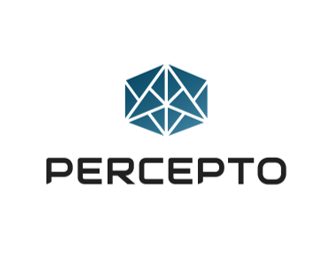
Percepto
Percepto is a developer of autonomous drone technology for inspection and surveillance. The company has developed solution to holistically inspect and monitor industrial sites, harnessing remote robotics to autonomously collect, aggregate, and analyze visual data. Percepto operates in mining, oil & gas, industrial sites, and solar energy production sites.
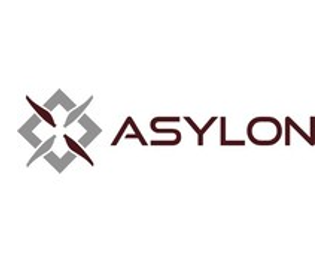
Asylon
Asylon manufactures and distributes a range of field deployable infrastructure to its clients. Among others, the company manufactures DroneHome, a field-deployable battery swap station. It offers data linking, coverage, mesh networking, and mixed fleet support. Asylon has chosen a robot-as-a-service model, where they provide an end-to-end solution for an annual subscription.

SkySpecs
SkySpecs is a provider of autonomous drone inspections for onshore and offshore wind turbines. The safety software services include the development of an automated drone inspection feature for applications in wind turbines, utility and other infrastructure operations and maintenance activities and provides an analytics platform that supports workflows at every level of the value chain.
123Fab #34
1 topic, 2 key figures, 3 startups to draw inspiration from
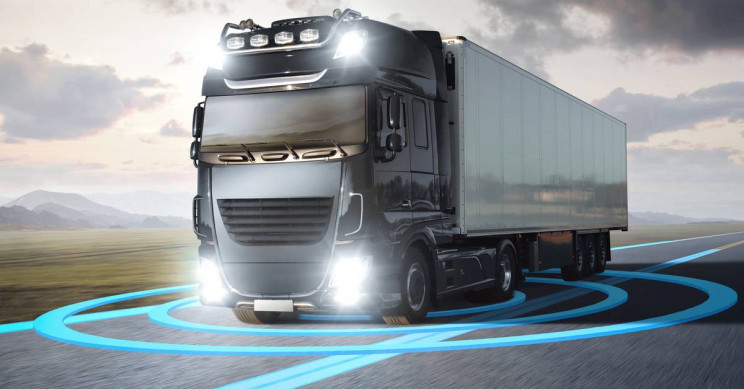
Breakthroughs in the field of autonomous vehicles, including for freight, have leaped forward in recent years. In October 2020, Swedish startup Einride unveiled a new driverless vehicle for autonomous freight, which the company hopes to see on the road this year. Last year, Plus.AI completed its first coast-to-coast commercial journey across the US with an autonomous truck, using simultaneous localization and mapping (SLAM) technologies. Indeed, a combination of factors has been fueling this development, including the increasing road freight (with 11,000 bn ton-km today, it is expected to double over the next 20 years) and the shortage of drivers (a lack of 175,000 drivers by 2024, according to the American Trucking Association).
In this respect, the European Commission launched in December 2020 a 29-partner consortium – All-Weather Autonomous Real Logistics Operations and Demonstrations (AWARD) – to shake up transport for the freight industry, and in particular, “operations in difficult weather conditions”. Led by EasyMile, this 3-year, €20 million project brings together truck manufacturers, equipment manufacturers, end-users and logistics operators.
While institutions are beginning to support autonomous freight, innovation and new technologies are the playground for startups and established automotive players. Innovations can be split into four main areas: sensors such as cameras or lidars (which provide data to a trained computer), computing hardware (responsible for autonomous driving calculations and decision making), storage infrastructure (to store data, on the edge and in the cloud, for future analysis and algorithm improvement) and autonomy software (which ultimately takes all the decision). If the range of technologies is similar to that of autonomous cars, long-distance trucks are better suited to test automated driving because of their extensive use of highways – where unexpected situations are less likely to occur than on urban roads – and the repetitiveness of their itineraries.
Startups at the wheel, which work on more or less autonomous trucks, include:
- US start-up TuSimple, a developer of autonomous driving technologies applied to trucks. It already has partnerships with two OEMs (Navistar and VW’s Traton truck OEM) and plans to reach Level 4 autonomy (trucks able to operate without a human driver under limited conditions that may include the time of day, weather, or pre-mapped routes).
- Otto, which was founded by former Google, Tesla, and Apple employees, is developing software to be installed on existing trucks to make them fully autonomous.
- Embark Trucks has already commercialized fully automated semi-trucks and trucks (used by Amazon for some loads).
Automotive and logistics players are also following the trend:
- Daimler Trucks signed a partnership with Waymo last October to deploy autonomous SAE L4 technology. They will combine Waymo’s cutting-edge automated driver technology with a unique version of Daimler’s Freightliner Cascadia, which will be commercialized in 2025.
- In 2016, a fleet of semi-autonomous Scania trucks (a Swedish manufacturer specializing in heavy vehicles) completed a journey from Sweden to the Netherlands using a technique called platooning, in which one driver pilots the leading vehicle while the rest follow along automatically (such as the one developed by Peleton Technology)
- Walmart announced last December that it would test driverless autonomous delivery trucks with startup Gatik from 2021. The trucks are equipped with sensors and autonomous driving software. To limit the risks, they have decided to start driving on the same and registered routes (mainly between warehouses and supermarkets).
The recent and on-going acceleration in autonomous freight vehicles is due to the many advantages they provide. 45% reduction in exploitation costs (McKinsey), better utilization (they operate 24/7 without driver rest periods), and a higher payload of trucks (as there is no driver cabin anymore). Moreover, it improves drivers’ conditions (avoiding night drives, more rest thanks to driving assistance). Finally, autonomous vehicles contribute to higher road safety (security systems should avoid 90% of crashes caused by human error) and a reduction of carbon footprint thanks to methods like platooning or IoT to optimize fuel consumption.
Nonetheless, several challenges or competitive alternatives remain. The impact on jobs is difficult to assess, due to the higher demand and need for monitoring of self-driving trucks. Autonomous fleets face autonomous trains which have higher productivity. One could see an opportunity for railway companies to integrate automated trucks. They could increase speed and throughput as well as secure a critical role in the overall ecosystem. Finally, as with autonomous cars, regulations need to be harmonized between countries, and the issue of liability is essential for further deployment.
To conclude, the market is growing fast and innovations are multiplying, which will likely lead to a technology transfer to other autonomous devices (cars, machines, robots, etc.). Institutions and key players, as Uber does, still need to work on driverless vehicle and regulation issues.
2 Key Figures
30 self-driving truck technology-provider startups
registered by Tracxn
Market size expected to reach $2.01bn by 2027
The market size of autonomous trucks is expected to reach $2.01bn by 2027, a CAGR of 12.6% from 2019
3 startups to draw inspiration from
This week, we identified three startups that we can draw inspiration from: Plus.ai, Kodiak Robotics, and Boxbot.
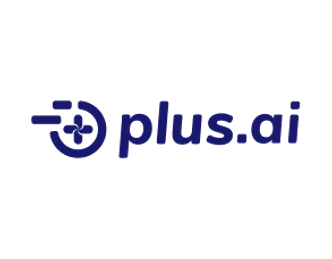
Plus.ai
Plus.ai develops self-driving technology for trucks. It offers solutions like the 360-degree perception that uses radars, LiDARs, and cameras for sensing. Their localization & mapping algorithms accurately track the location of trucks and detect and analyze road structures, and predict the behavior of other on-road vehicles.
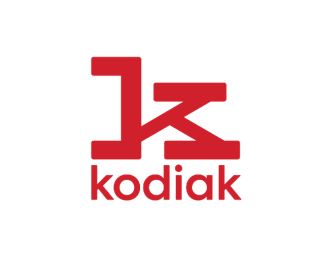
Kodiak
Kodiak Robotics is a developer of self-driving trucks. It develops autonomous trucks with a full-stack solution with simulation enhanced system to optimize the risk. Their fleet of self-driving trucks ahave been tested in California and are currently operating in Texas.

Boxbot
Boxbot is a developer of automation technology designed to address the last-mile issues in logistics, enabling businesses and individuals to optimize the experiences of suppliers and consumers.
